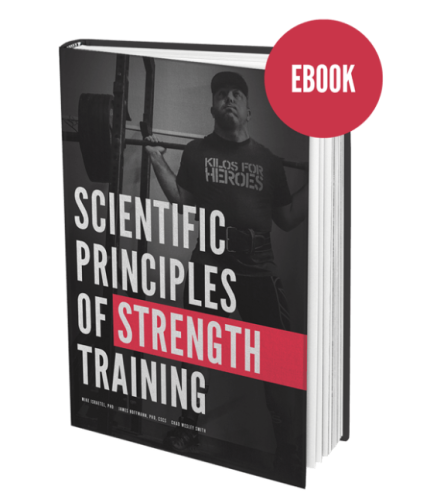CONVENTIONAL WISDOM IN the gym exists for a reason — namely after so many people have attempted to get big/strong/lean (delete as applicable), patterns tend to emerge in training programs that are efficacious for the vast majority of humans the vast majority of time.
Sometimes however conventional wisdom may not be so wise.
There is one generally accepted piece of conventional wisdom that I feel needs to be challenged and will ultimately be proven wrong:
Deadlifts should be done in sets of five or less
For years I adhered to this rule blindly, as everyone I encountered in the gym and online would echo the sentiment that deadlifting in high rep sets would only lead to a strained lower back, a dropped barbell due to grip failure, or a ‘fried CNS’ (whatever that means).
So when deadlifting I would keep my efforts to sets of five or below, frequently working up to a ‘heavy’ single.
I would also very frequently tweak my lower back, lose grip on heavier pulls, and my best efforts for many years was a paltry 170kg.
Around two years ago I attended a seminar led by Greg Nuckols, a world class power-lifter, genius level coach and writer, and all round lovely bloke.
He opened my mind to the idea that strength is not some mystical force bestowed upon us by the universe, but rather the result of the contractile potential of your muscular system, as well as the robustness of your tissues to handle load. One thing he spoke about that resonated with me was the idea that a bigger muscle has potential to be a more robust muscle, and if you have a bunch of robust and big muscles you’re far more likely to be able to train yourself to be stronger.
This was echoed in the excellent Scientific Principles Of Strength Training (buy it now if you want to learn a ton about how to write programs) by Dr. Mike Israetel, Dr. James Hoffman, and Chad Wesley Smith, specifically in the chapters dealing with the concept of phase potentiation; which sounds complicated but really is just a fancy way of saying that you can structure the sequencing of training phases to increase the potential gain from each subsequent phase.
What did that mean for my deadlifts?
It meant that in order to get better at deadlifts I needed to increase the strength of the muscles that did deadlifts, and in order to increase the strength of the muscles that did deadlifts I needed to consider making the muscles that did deadlifts bigger and more robust.
How would I do that?
I would attempt to hypertrophy all of the muscles involved in the deadlift with higher repetition sets which brought me closer to muscular failure. Sets of five or less was no longer making me stronger as I had reached a plateau, and my plateau was not going to be overcome without gaining some muscle, which I could then make stronger.
So to bring this personal tale to a close, I began to cycle through higher volume deadlifts in an attempt to make my personal best (/personal shame) a little bit more presentable. There was of course a few rough weeks at first where I nearly cried pulling on the likes of 120 or 135kg for sets of 10 or 12, thinking my thumbs were going to fall off or waking up the next day so drained because I had literally just brought almost every muscle in my body near or to the point of failure.
… And I think this is the part that stops high rep deadlifting from being widely adopted into conventional gym wisdom — the fact that the act of high rep or high frequency deadlift is both physically and mentally draining. Pitting yourself against a heavy barbell for high reps will test your resilience as well as your concentration, and should either fail you may end up with a tweaked lower back or a bruised ego.
How did I do with this change of programming outlook? Great.
After the initial shock to the system I began to grow more muscle than ever before, gaining a solid 5kg of lean body mass and with it a decent jump in strength thrown in for good measure.
The results speak for themselves with a 32kg jump in PB in less than 2 years (which truth be told came within the first six months), as well as some pretty satisfying higher rep sets along the way.
It’s important to note that I am not a powerlifter, so do not engage in the peaking process which would be the final stage of phase potentiation whereby I would teach my newly big and strong muscles to contract as hard and as fast as possible to lift the heaviest thing I could find (apart from my feels obviously).
Instead I prefer to cycle through phases of endurance, hypertrophy, and strength bringing my deadlifts as high as 12 and as low as five, with an obviously different load for each rep value.
To give an extremely brief overview of how to put this into practice check out the table below:
Month 1 – 10’s Wave up to 75%Month 2 – 8’s Wave up to 80%Month 3 – 5’s Wave up to 85%Month 4 – 12’s Wave up to 70%
Each month will then be periodised in order to peak in week four before the next phase/wave can begin with a relatively easy week one.
Again, for an example to allow you to visualise this:
Week 1 – 3-4 sets of 8 — 70%Week 2 – 4 sets of 8+ — 70%Week 3 – 3 sets of 8 — 75%Week 4 – 1 set of 8+ — 80%
There are a number of ways to periodise each month, however I’ve found that this is the method that offers the most forgiving upward gradient as well as allows for the greatest overall volume over the course of the 4 week mesocycle — which ultimately is the name of the game when it comes to higher rep deadlifting for the purpose of hypertrophy and strength; the more you do, the better you grow, the stronger you get.
If you want a full program that uses a similar model of progression for deadlifts then check out what I’ve written here.
Wrapping up
If there is one constant theme with my articles on The42 it’s that I want to get my readers to go out there and challenge themselves in the gym as well as challenge their preconceived notions on what makes up smart and effective programming.
The more people we can reach with information like this the more people we can save from wasting their time at the gym or leaving massive amounts of their own potential untapped. Had I not gone to that Greg Nuckols seminar or read Scientific Principles I could still be failing my 170kg pull attempts right now, I could be tweaking my back on the regular with anything over 150kg, and what’s most important I could have a lot less likes on my instagram posts which could very well be the death of me.
Together, dear reader, we can become Fitness Mythbusters, and eliminate pseudo science, voodoo, and general old wives tales from the gym forever. Simply go onto your social media and give this article a “cheeky share” and you’ll have done your bit for the day to help some of your friends to Live Better (that’s a play on the name of my website you see; Livebetter.ie).
Dean Merton is a Dublin-based strength coach and personal trainer. For more information you can follow him on Facebook and Instagram, or you can send him a direct message here.
You can also see some of his previous articles here.
Subscribe to The42 podcasts here:



